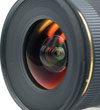

The benefits of IP cameras are self evident, however, eager sales people and pressurised security personnel might be tempted into installing a set of cameras without giving due consideration to the impact they will have on the corporate network.
Simply assuming that IP cameras will make use of the corporate network to transmit their images is a serious error that will not only reduce or completely kill the operations of the cameras, but could also affect the running of the business.
Networks were designed to, and are used to, transfer business data in copious amounts, but in some companies even today's networks are straining at all the information people and applications transmit. It is therefore critical to ensure IP camera traffic will not disrupt the flow of business data before installing the cameras.
To prevent any unpleasantness, a network impact analysis needs to be completed before the rollout begins. A network impact analysis is simply a way to determine the health of one's network and its capacity to handle more traffic. There are numerous tools companies can choose from to do the analysis, with certain vendors punting tools they prefer, but the process itself is pretty standard.
Network audits
To start with, a high-level audit is done to obtain a birds-eye view of the network, its components, operations, the opinions of those managing and using it, as well as existing strategies that will place an added strain on it. In this process, each system and hardware component is categorised.
This in itself is a worthwhile exercise as it often highlights weak links in the network where older technology is creating a bottleneck. It also allows management to see exactly what data is traversing the network daily - a discovery that shocks many business leaders. Knowing what data the company is transporting often leads to new company rules disallowing social networking sites and videos (and other unsavoury items found on the Internet), a move that often lowers network utilisation dramatically.
A service provider worth its salt will also review the event logs of its customers' servers, workstations and managed devices to try to squeeze the ultimate performance from their systems. Many service providers will ignore the log because scanning them can be a boring and lengthy task no one really wants to undertake.
Once completed however, the company will have a clear understanding of what its network does and what additional loads it can carry. The next step is to determine what load the new network of IP cameras will add.
Additional image bandwidth
One of the benefits of IP cameras over CCTV systems is that their images can be tweaked to suit the needs of the company. Administrators can, for example, only allow one image to be broadcast every few seconds or have full motion video. New technologies in which cameras manage themselves will prevent the devices from transmitting any images until the camera recognises a problem, sounds an alert and starts broadcasting.
Analysing the needs of the company will assist in designing the optimal camera setup that uses but does not abuse the network. Determining the exact bandwidth usage of a camera is difficult. It depends on factors such as image size, compression ratio, frame rate (images per second) and resolution.
Fortunately, there are many tools available to assist in determining how much bandwidth cameras with specific settings will consume. These tools also offer a good idea of the storage requirements of different camera settings.
If the corporate network cannot handle the traffic, the team responsible for the video images will have to consider either a joint operation with IT to upgrade the network, or to create a separate network specifically for images, or reducing the bandwidth required by reducing the quality and therefore the size of the images transmitted.
A careful analysis of the existing network and the security requirements of the company will empower the management team to make an accurate decision on the best course of action.

© Technews Publishing (Pty) Ltd. | All Rights Reserved.